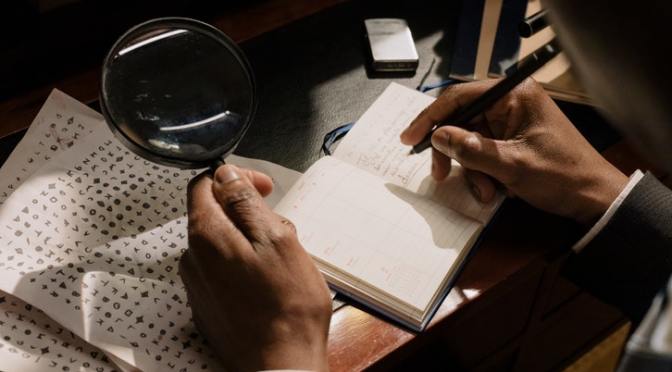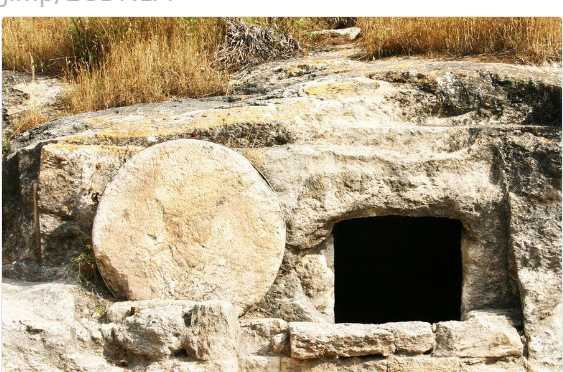I spotted this post on Be Thinking by UK apologist Peter S. Williams. (H/T Eric Chabot at Think Apologetics)
So let me pick the ones I liked most for this post.
Here’s a good one:
Jerusalem and The Pool of Bethesda
John 5:1-15 describes a pool in Jerusalem, near the Sheep Gate, called Bethesda, surrounded by five covered colonnades. Until the 19th century, there was no evidence outside of John for the existence of this pool and John’s unusual description “caused bible scholars to doubt the reliability of John’s account, but the pool was duly uncovered in the 1930s – with four colonnades around its edges and one across its middle.”[38] Ian Wilson reports: “Exhaustive excavations by Israeli archaeologist Professor Joachim Jeremias have brought to light precisely such a building, still including two huge, deep-cut cisterns, in the environs of Jerusalem’s Crusader Church of St Anne.”[39]
And this one:
Jerusalem and The Pool of Siloam
In the 400s AD, a church was built above a pool attached to Hezekiah’s water tunnel to commemorate the healing of a blind man reported in John 9:1-7. Until recently, this was considered to be the Pool of Siloam from the time of Christ. However, during sewerage works in June 2004 engineers stumbled upon a 1stcentury ritual pool when they uncovered some ancient steps during pipe maintenance near the mouth of Hezekiah’s tunnel. By the summer of 2005, archaeologists had revealed what was “without doubt the missing pool of Siloam.”[40] Mark D. Roberts reports that: “In the plaster of this pool were found coins that establish the date of the pool to the years before and after Jesus. There is little question that this is in fact the pool of Siloam, to which Jesus sent the blind man in John 9.”[41]
I just read this one because I am working my way through John. In case you haven’t read John, you really should it’s my favorite gospel.
Here’s another one:
Herod the Great
We have a bronze coin minted by Herod the Great. On the obverse side (i.e. the bottom) is a tripod and ceremonial bowl with the inscription ‘Herod king’ and the year the coin was struck, ‘year 3’ (of Herod’s reign), or 37 BC.
In 1996 Israeli Professor of Archaeology Ehud Netzer discovered in Masada a piece of broken pottery with an inscription, called an ostracon. This piece had Herod’s name on it and was part of an amphora used for transportation (probably wine), dated to c. 19 BC. The inscription is in Latin and reads, “Herod the Great King of the Jews (or Judea)”, the first such that mentions the full title of King Herod.
Herodium is a man-made mountain in the Judean wilderness rising over 2,475 feet above sea level. In 23 BC Herod the Great built a palace fortress here on top of a natural hill. Seven stories of living rooms, storage areas, cisterns, a bathhouse, and a courtyard filled with bushes and flowering plants were constructed. The whole complex was surrounded and partly buried by a sloping fill of earth and gravel. Herod’s tomb and sarcophagus were discovered at the base of Herodium by archaeologist Ehud Netzer in 2007.
And one more:
The ‘James, son of Joseph, brother of Jesus’ Ossuary
James, the brother of Jesus, was martyred in AD 62. A mid-1st century AD chalk ossuary discovered in 2002 bears the inscription “James, son of Joseph, brother of Jesus” ( ‘Ya’akov bar Yosef akhui di Yeshua’). Historian Paul L. Maier states that“there is strong (though not absolutely conclusive) evidence that, yes, the ossuary and its inscription are not only authentic, but that the inscribed names are the New Testament personalities.“[68] New Testament scholar Ben Witherington states that:“If, as seems probable, the ossuary found in the vicinity of Jerusalem and dated to about AD 63 is indeed the burial box of James, the brother of Jesus, this inscription is the most important extra-biblical evidence of its kind.”[69] According to Hershel Shanks, editor in chief of the Biblical Archaeological Review: “this box is [more] likely the ossuary of James, the brother of Jesus of Nazareth, than not. In my opinion … it is likely that this inscription does mention the James and Joseph and Jesus of the New Testament.”
And finally one short one:
Tiberius Caesar
The Denarius coin, 14-37 AD, is commonly referred to as the ‘Tribute Penny’ from the Bible. The coin shows a portrait of Tiberius Caesar. Craig L. Blomberg comments: “Jesus’ famous saying about giving to Caesar what was his and to God what his (Mark 12:17 and parallels) makes even more sense when one discovers that most of the Roman coins in use at the time had images of Caesar on them.”[48]
This is a good article to bookmark in case you are ever looking for a quick, searchable reference on archaeology and the Bible. There are many more examples in that post.
Now some people might be wondering why archaeology doesn’t confirm every detail in the New Testament. And here’s what J. Warner Wallace has to say about that:
But what are we to say to those who argue the Biblical archeological record is incomplete? The answer is best delivered by another expert witness in the field, Dr. Edwin Yamauchi, historian and Professor Emeritus at Miami University. Yamauchi wrote a book entitled, The Stones and the Scripture, where he rightly noted that archaeological evidence is a matter of “fractions”:
Only a fraction of the world’s archaeological evidence still survives in the ground.
Only a fraction of the possible archaeological sites have been discovered.
Only a fraction have been excavated, and those only partially.
Only a fraction of those partial excavations have been thoroughly examined and published.
Only a fraction of what has been examined and published has anything to do with the claims of the Bible!
See the problem? In spite of these limits, we still have a robust collection of archaeological evidences confirming the narratives of the New Testament (both in the gospel accounts and in the Book of Acts). We shouldn’t hesitate to use what we do know archaeologically in combination with other lines of evidence. Archaeology may not be able to tell us everything, but it can help us fill in the circumstantial case as we corroborate the gospel record.
I think you can form an opinion about the whole New Testament based on the record of confirmations. The verdict is in: the New Testament should be presumed trustworthy.



